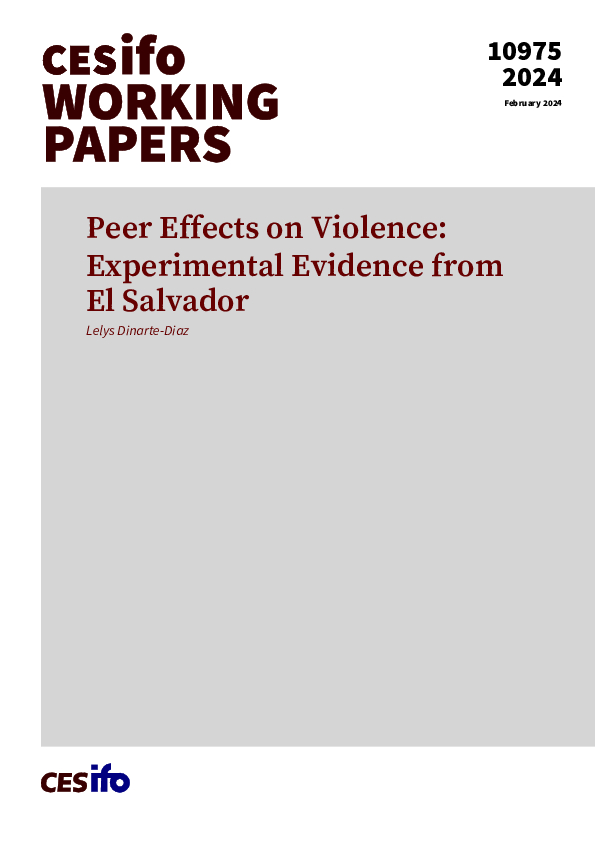Peer Effects on Violence: Experimental Evidence from El Salvador
CESifo, Munich, 2024
CESifo Working Paper No. 10975

Globally, 150 million adolescents report being victims of or engaging in peer-to-peer violence in and around school. One strategy to reduce this risk is to occupy youth in after-school programs (ASP). Yet, the question remains: how does peer group composition affect the effectiveness of an ASP? I address this question by randomly assigning youths to either a control, homogeneous, or heterogeneous peer group within an ASP implemented in El Salvador. I find that, unlike homo-geneous groups, heterogeneous peer groups do help students avoid violence. These results are relevant to public policy discussions on optimal group composition for violence reduction programs
Economics of Education